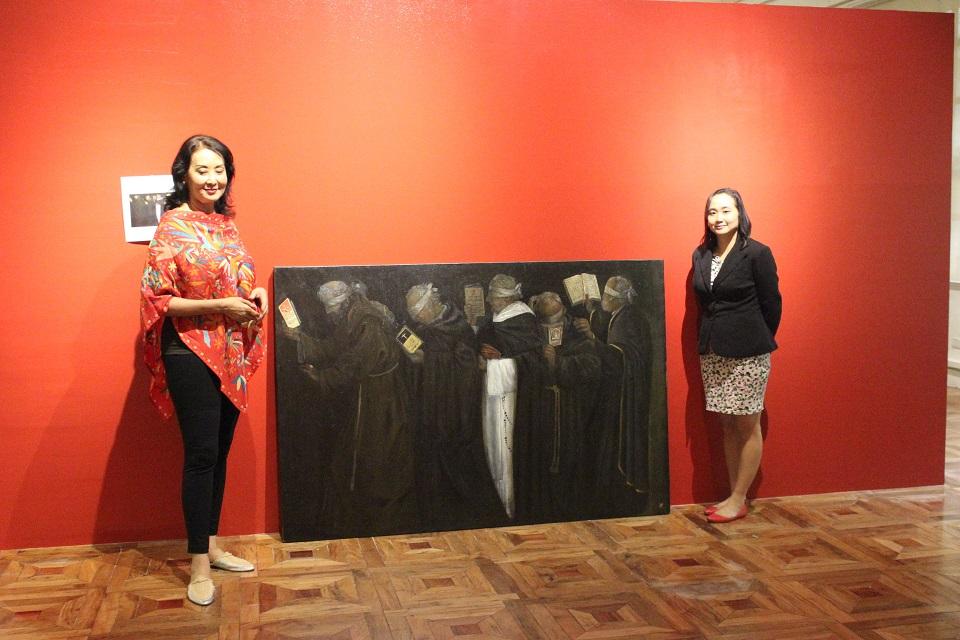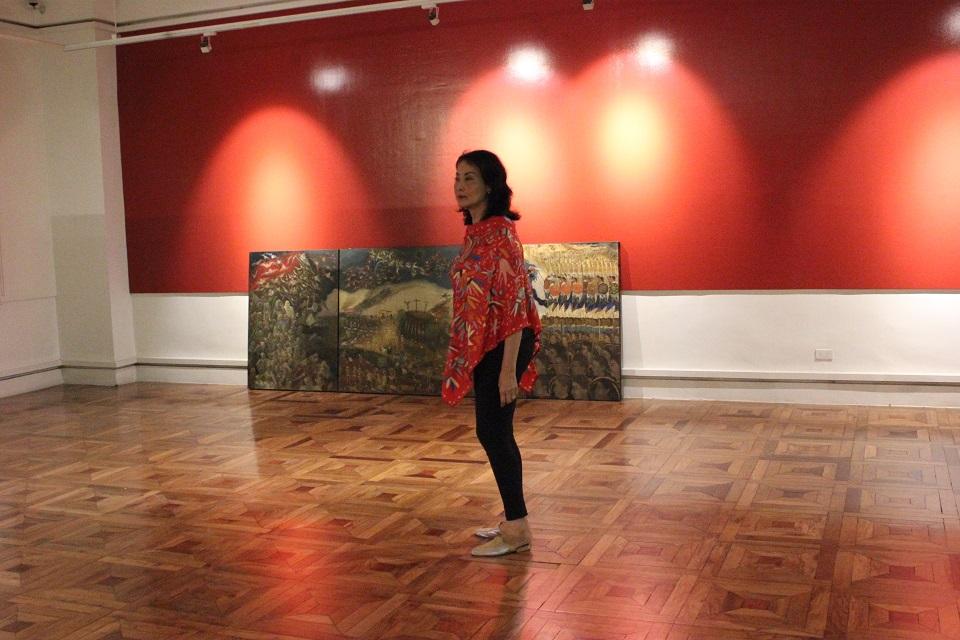‘Hocus’ focus : Freedom or slavery?

There comes a time in the lives of men and nations when ruling ideas that no longer give life must be laid to rest for the sake of the living. What better way to mark a turning point than with powerful art?
There’s a sense of the fullness of time in "HOCUS," a new exhibit in the National Museum of Fine Arts. Its leap of consciousness, to my mind, is the closest contemporary Filipino art has come to recreating the trauma of colonization thus far.
"Hocus" is a portmanteau of the surnames of the two Filipinos behind these 26 oil paintings.
HO is Saul Hofileña, a lawyer-historian who dreamed up these images in the mythic spirit of 19th century painter Esteban Villanueva’s recreation of the Basi Revolt.
CUS is Guy Custodio, a Spanish period art restoration specialist and painter who lent his fine expressionist hand to Hofileña’s sardonic retelling of the Filipino-Spanish centuries in authentic detail.
Hocus’s bête noire is the Patronato Real that subjugated our ancestors with the Cross tightly entwined with the Sword. Giving full play to his insights on the historical facts he unearthed, the scholarly Hofileña travels beyond history into metaphysical realms. Angels, saints, and the godhead itself become instruments of earthly power reimagined in the upside-down world of his Una iglesia antigua de Basey, Samar.
Focus on the indio psyche’s derailment from its organic world also evokes contrast between indio minds still enslaved today and our long-gone, pre-colonial ancestors.
Their spirit is what rose in the 19th century Basi Revolt, defending ancestral right to ritual intoxication. This organic culture is so enduring that still sustains our severely persecuted katutubo today.
Some peaks in this historical teach-in:
Lectores de las palabras perdidas (Readers of the Lost Words) with five blindfolded priests in black, brown and white robes, noses buried in novena, catechism and prayer book, “blindly teaching the faith” detached from the suffering of flesh-and-blood indios.
In this abysmal gap between ruler and ruled, the music of the patronato centers around the famous Las Piñas bamboo organ. Here a wigged Spanish governor general plays music surrounded by the native principalia, all other indios and their Muslim kindred standing apart. Meanwhile, a bold indio climbs the organ, trying to reach the top with a crossbow; another has given up and hung himself on one side.
Atop the organ, a handsomely robed clergy lounges close to the Crown in the grand indifference of the ruling class.
Things are changing, but two close-ups of indios at the peak of Spanish rule recreate their reality that still echoes today. How we lost our names tells the tale of Governor General Narciso Claveria’s decree for all indios to change their surnames from government’s Catalogo Alfabetico de los Apellidos.
Claveria’s purpose was to ease tax collection and other administrative concerns. Hofileña emphasizes the contemptuous malice in the inclusion of Spanish names for “human ordure (cagas) vices, ailments and deformities.” Forbidden to learn Spanish, Indios had no way of knowing what their adopted names meant.
Humiliating surnames retained to this day were moreover enforced with a draconian hand: “Local government officials and parish priests were instructed not to issue permits or official documents to natives whose surnames did not appear in the Catalogo. Those who reverted to their original surnames after registering their new ones were penalized with a jail term,” notes Hofileña.
The rout of the indio mind was almost complete by then. Nearly all of Luzon and the Visayas complied, except for “pockets of resistance in Laguna and Pampanga.”
Next is Los filipinos, a tableau of obscure indios trapped in “the Empire of the Friars.” Hofileña reflects with historian Milagros Guerrero that they were the “reason the friars willed Rizal’s death”, fearing mass awakening “from centuries of slumber caused by religion.”
Now we reach Puente de capricho – The Bridge of Caprice – an unfinished bridge in the Franciscan settlement of Majayjay, Laguna.
Dominicans climb a wooden ladder to a showdown with their rival Franciscans atop the bridge, both wielding religious icons as weapons of war. Meanwhile Rizal, Noli and Fili under his arm, escapes in a boat as a babaylan sends warning signals from the riverbank. On the opposite shore, Rizal’s words come alive in a mother dog attacking a crocodile for killing her pup, symbolizing Mother Filipinas’ rising anger.
Meanwhile an india water carrier stands under the ladder, torn between the friars and Rizal, just like Filipinos torn between freedom and compromise with today’s new tyrants.
This footnote on religious orders competing for territory resonates in today’s shortage of agricultural land converted by a Catholic-schooled Filipino elite into disturbingly vast industrial plantations and urban real estate defying land reform.
Next is Celestial Chess Players, two cowled monks playing chess – Spaniards as white pieces, indios as black. Their game is mirrored in a heavenly chessboard held aloft by two angels, one cheering for justice, the other for truth. But the frailes’ game subverts the spirit of Christianity’s founder. White is routing black, but already an absent white king leaves black with nothing to win.
Finally comes a grand triptych La pesadilla, The Nightmare Hieronymous Bosch would have applauded. The eye is caught first by Christ’s Crucifixion at center and a surreal feast of killing replete with skeletons below.
On either side stand resisters of mass slaughter and soldiers all in a row facing a defiant mass of darkly brooding humanity on the opposite side. Light and dark winged beings fly over the whole horrific scene.

These are “nightmares in my mind,” Hofileña confesses. “I see death in various forms – mga araw na walang Diyos post-Golgotha and pre-Resurrection. Good and Evil are in a fierce and perpetual battle for hegemony over the Earth and its creatures.”
This intense drama of life and death, freedom and slavery curated by Gemma Cruz-Araneta opened on Easter week. The National Museum judged it significant enough for six months on show. You have till October to contemplate its hypnotic images of indio soul still struggling to break free five centuries since Magellan. — BM, GMA News
Saul Hofileña and Gus Custodio's 'Hocus' is on exhibit at the National Museum of Fine Arts (Old Legislative Building) in Manila. Museum hours are from 10:00 a.m. to 5:00 p.m. Tuesday to Sunday.



